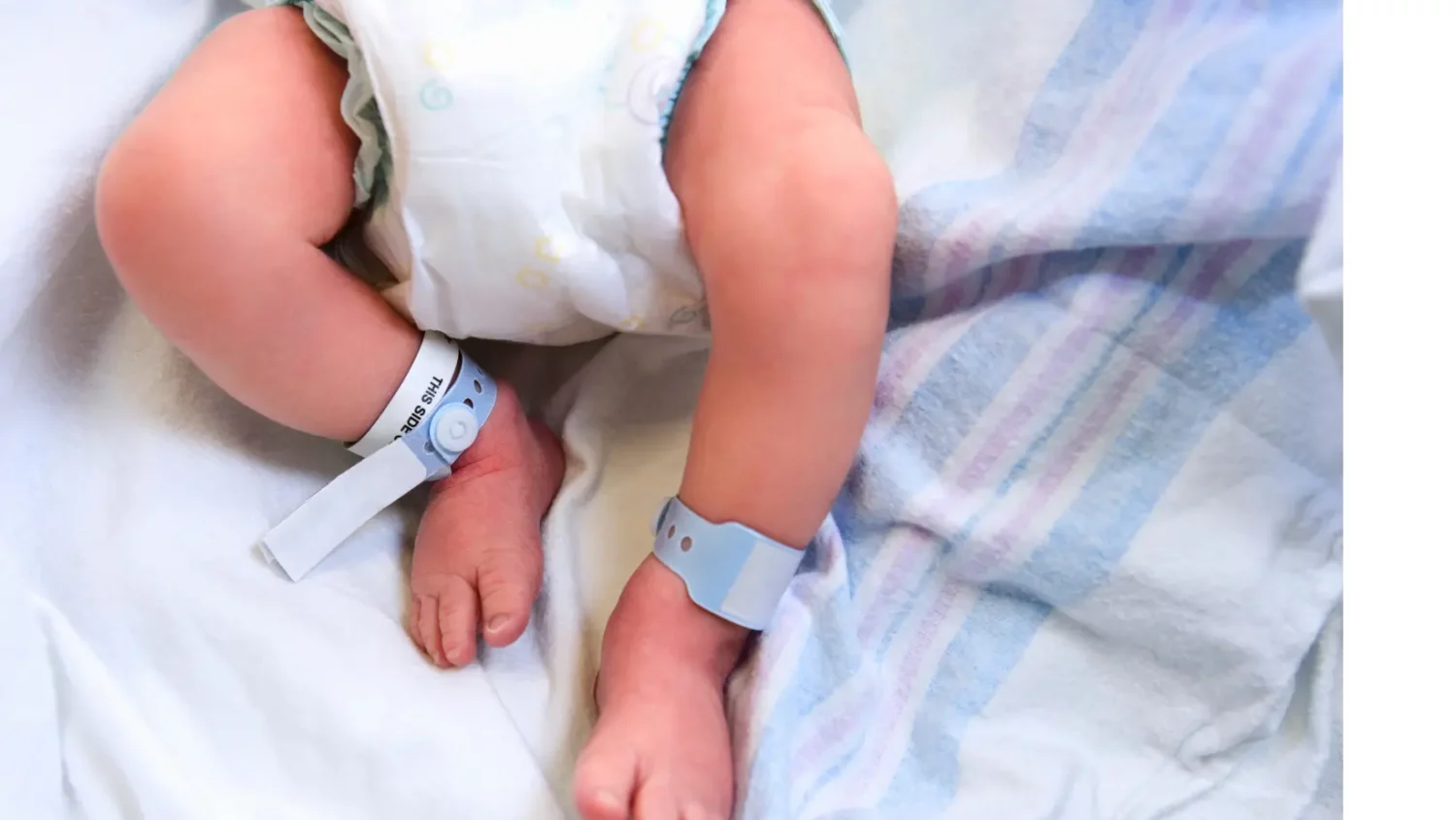The preparation of this entry was made in partnership with the Clinique podiatrique de l’Estrie.
Following the birth of their baby, sometimes parents are worried about the fact that their little treasure’s legs are arched, and their feet point more inside. Also, many parents ask me what they should put on their child’s feet as they grow: should we leave them barefoot? Put on soft shoes? Little leather slippers? A soft shoe with more support? These are important questions that we will try to answer in this entry.
In this entry:
At the developmental level
A maternal uterus is a space that will hold a baby throughout the pregnancy and will force it over time to adopt positions and postures that will allow it to adapt to its ever more restrictive environment. Curved legs and feet that are sometimes oriented inwards are a direct link to this in-utero adaptation.
Given the baby’s articulations are very mobile and their cartilage is more flexible at that age, this can explain why a baby can have arched legs and deviated feet and that this is in fact not a problem for them only birth and after. The transformation of bone cartilage will take place gradually with age and everything adjust automatically the majority of the time. The growth of feet can continue normally up to 12-13 for girls and 14-15 for boys.

When the baby starts to stand on their feet, when you support them on your legs (“taking steps”), often they will do it on tip-toes, and this is not by chance. For the most part babies have flat feet, meaning they do not have an arch under the food due to their fatty tissue. Time will change this between the newborn stage and the age of about 7. There will be a maturation and development of muscles and ligaments in the two first years of life that will allow for the reinforcement of articulations and to better stand with more balance.
The arch of the foot will develop around age 3 at the same time as the cartilage will ossify. Even if the growth of children’s feet slows down after 2, it will continue up to adolescence. Often foot problems are noted before 3 years of age by a professional in the field, such as a podiatrist, and will help avoid complications over the short and medium term and maximise rehabilitation.
It is never normal that your child always walks with an in-toe, and this should require consultation to provide the proper support.
To read the rest of this entry, see Walking Barefoot, with Slippers or with a Support Shoe?


